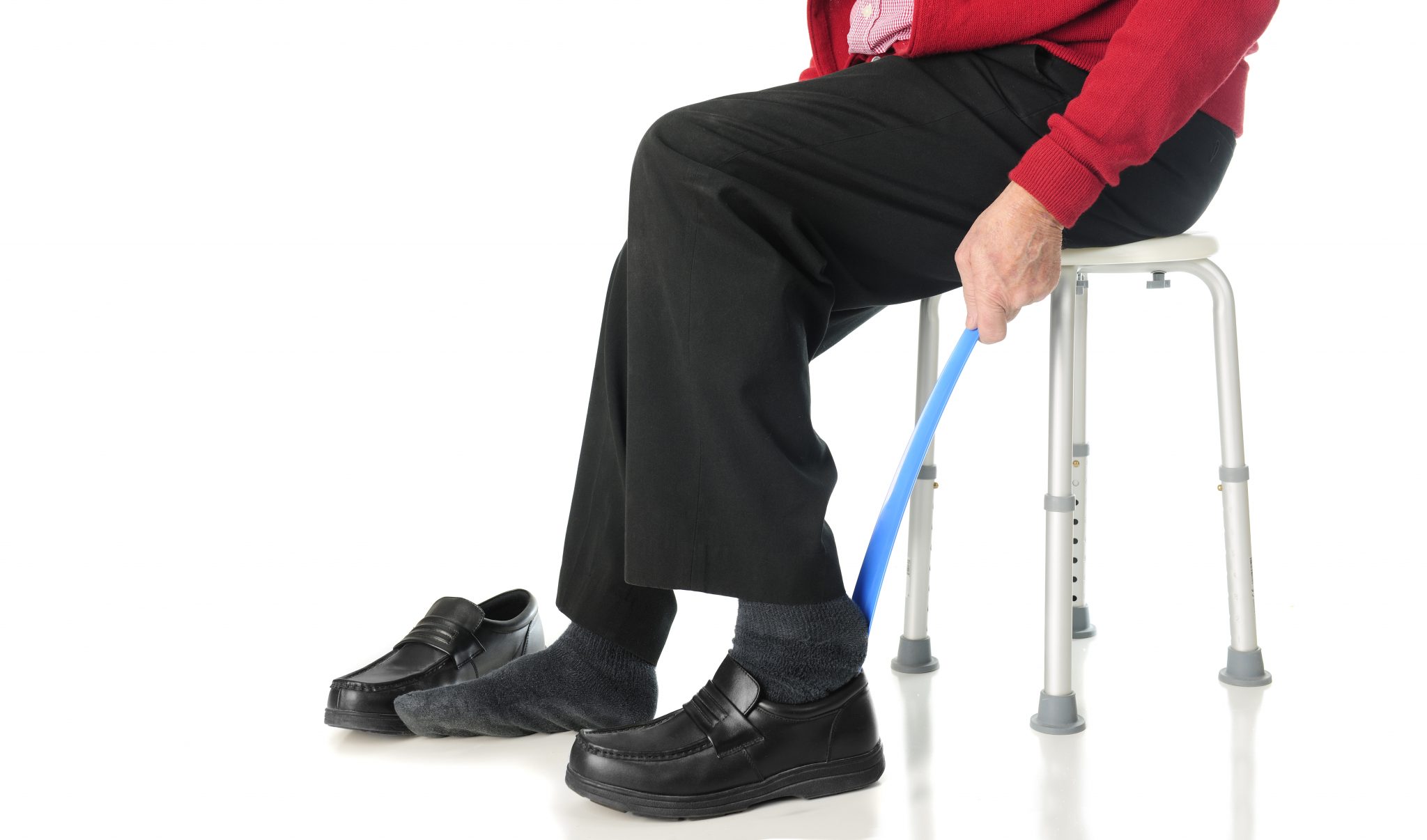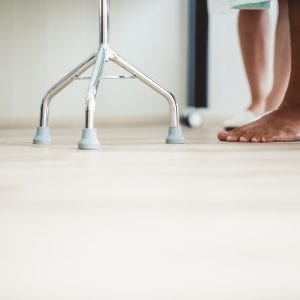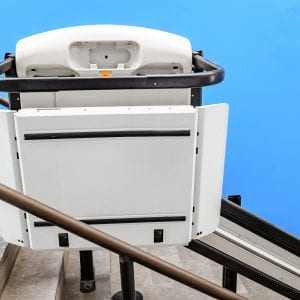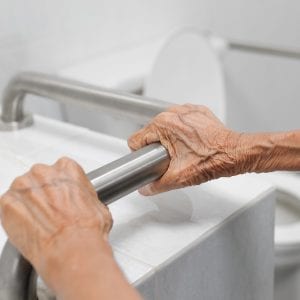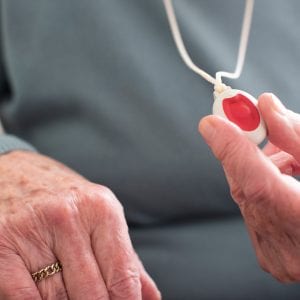Home & Family

As people age, the ability to live independently may decrease. Assistive devices help older adults perform difficult daily tasks and activities.
In the coming years, the population of older adults in the United States, for the first time in history, will outnumber the population of children under the age of 18.
Key Facts
- The world’s population aged 60 years and older (900 million in 2015) is expected to increase to 2 billion in 2050.
- Between 2015 and 2060, the number of Americans aged 65 years and older is projected to more than double from 46 million to 98 million.
- Between 2010 and 2030, the number of Alabamians aged 60 years and older is projected to increase
by 42 percent. - Nine in 10 older adults plan to continue living in their current homes (aging in place) over the next five to ten years.
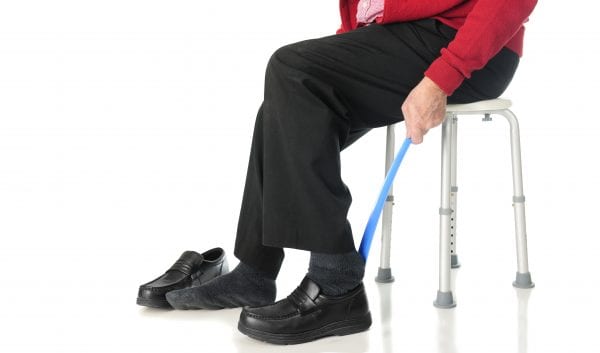
Shoe Removal Aid. iStock photo by McIninch
As people age, the ability to live independently may decrease. Although the majority of seniors prefer to age in place, many will find performing daily tasks and activities challenging. Older adults need support to care for themselves, to maintain mobility, to sustain communication, and to be safe. This support helps to improve or restore confidence, self-respect, and independence.
Assistive technology devices are “those whose primary purpose is to maintain or to improve an individual’s functioning and independence to facilitate participation and to enhance overall well-being” (WHO, 2019). These devices help older adults perform difficult daily tasks and activities. Assistive technologies can prevent older adults from having to give up activities they enjoy. These devices enable them to maintain their dignity and to live independently. Some commonly used assistive technology devices fall into the following categories: personal or self-care, personal mobility, communication, and safety devices.
Self-Care Assistive Technologies
Personal or self-care devices help older adults to accomplish daily hygiene and grooming tasks that maintains their dignity. Self-care assistive technologies include long reach self or comfort-wipes, shoe removal aids, sock/stocking aids, long-handle shoehorns, zipper pulls, button hook aids, bathtub bench or boards, commode chairs, shower chairs, long handle bathing sponges, etc.
Mobility Assistive Technologies
Mobility assistive technology devices help older adults to get around more easily. They include, but are not limited to walking canes, activator poles, walkers, crutches, scooters (wheelchairs with electric motors), up-lift seat assists, stair elevators, rope ladders, and wheelchairs. One of the most advanced mobility assistive technology is the stair-climbing wheelchair. It allows older adults to not only climb stairs while remaining in the chair, but it elevates the individual from a sitting position to a standing position.
Mobility assistive technologies are suitable for older adults with limited or impaired movement such as balancing problems or the need to keep stress off certain joints.
- Walking Cane. iStock photo by Nattakorn Maneerat
- Stair-Climbing Wheelchair. iStock photo by frantic00
- Older adult using a computer. iStock photo by Wavebreakmedia
Communication Assistive Technologies
Communication assistive devices help people to see, hear and speak. These devices assist older adults in sending and receiving messages. Communication assistive technologies include hearing aids, talking devices, voice command devices, simple to use telephones, iPad or computer, telephone amplifier, video intercom, echo device, and magnifiers.
TV ears are popular assistive technologies and are used like a headset. They allow an older adult to listen to a TV program at a louder volume than other individuals watching the same program.
Safety Assistive Technologies
Safety assistive devices support older adults with impaired memory, lack of balance, weakened limb function, decreased eyesight, etc. They reduce accidents such as falls and help increase safety. Some safety assisted technologies are grab bars, night lights, pill organizers, edge protectors, raised toilet seat with side rails, grip and turn knobs, reachers, non-skid rugs, video doorbells, and wheelchair ramps. An upcoming and popular device in this category is the wearable medical alert system. This device not only has a panic button, but it comes with fall detection. The device detects when an older adult falls and notifies the proper authorities.
- Bathroom Handrail. iStock photo by Toa55
- Wearable Medical Alert System. iStock photo by Daisy-Daisy
Closing
Although there are many types of assistive technologies older adults can use, the selection of all assistive technology devices is based on the needs of an individual. Older adults should seek the advice of doctors, occupational therapists, caregivers, family members, and/or friends. Also, do comparison shopping and ask if the devices are covered by insurance, including Medicare or Medicaid.
References
Population Reference Bureau (2016). Fact sheet: Aging in the United States. Retrieved from https://www.prb.org/aging-unitedstates-fact-sheet/.
United States Census Bureau (2018). Older people projected to outnumber children for first time in U.S. history. Retrieved from https://www.census.gov/newsroom/press-releases/2018/cb18-41-population-projections.html
World Health Organization (2019). Assistive devices and technologies. Disability. Retrieved from https://www.who.int/disabilities/technology/en/.
World Health Organization (2018). Ageing and health. Retrieved from https://www.who.int/news-room/fact-sheets/detail/ageing-and-health.
Alabama Department of Senior Services. (2013). Alabama State Plan on Aging: Fiscal Years 2017-2020. Retrieved from http://adss.alabama.gov/assets/Alabama-State-Plan-on-Aging-FY-2017-2020.pdf .
Download a PDF of Assistive Devices and Technologies, UNP-2167.


